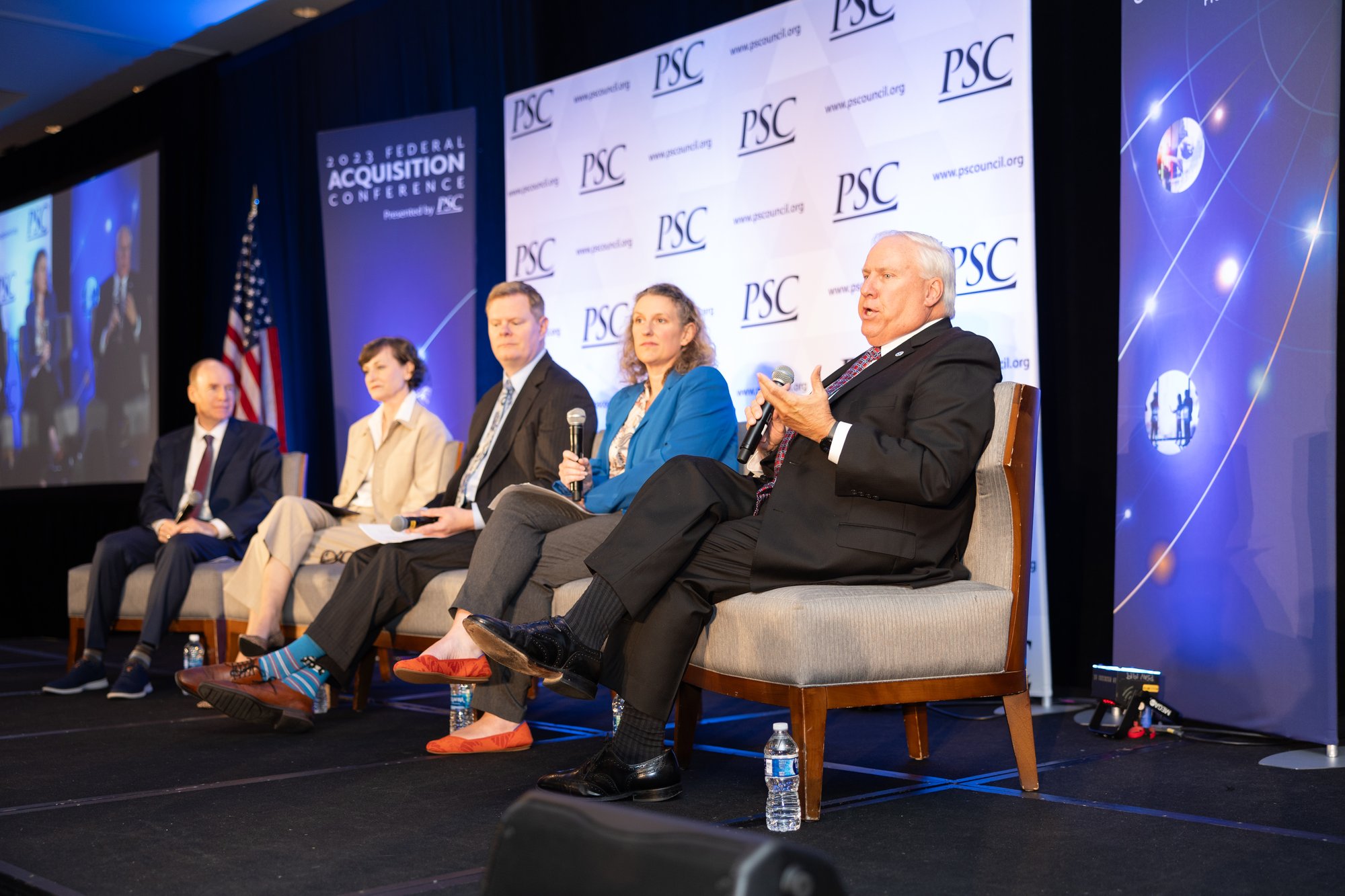Agenda
June 5, 2025 Day 1

At an unprecedent rate, the new Administration began with a flurry of executive orders, implementing memos, and agency guidance that support President Trump’s priorities and policies. What intended impacts have these actions had on the federal marketplace and mission success? What have been unintended consequences? How are government executives and contractors addressing the drastic changes in this space – and maintain the health and viability of our nation’s industrial base?



For nearly three decades, the U.S. Government has begun each fiscal year under at least one continuing resolution—which often leads to suppressed obligations and expenditures, risk aversion among contracting officers, and uncertain funding streams for companies. How do leading government contracting companies think about this “not so new” normal? What has made FY25—and now FY26—different, and how have chief executives changed their approach to federal work, if at all?




In light of statutory restrictions, regulatory requirements, and natural resource limitations, a key challenge in the federal contracting space has been supply chain risk and resilience. This is especially relevant in information technology and software provenance, as our nation increasingly turns to emerging technologies that may quickly become obsolete. How is the federal government thinking about these technologies? About risks posed by potential state and non-state adversaries? What advances are available for companies to illuminate, and validate the surety, of their supply chains?





.png?width=90&height=90&length=90&name=allen%20(1).png)
Please note that sessions and speakers are subject to change due to the evolving environment within federal government and other circumstances beyond our control. We appreciate your understanding and flexibility.
Check back often for updates.
“The PSC Federal Acquisition Conference offers an exceptional opportunity to connect, learn, and collaborate with the best minds in federal procurement. With thought-provoking panels, networking opportunities, and insights from top government and industry leaders, this event is about forging partnerships, embracing innovation, and making a tangible impact on federal acquisition outcomes." - Jeff Shen, Red Team Consulting (2024 Chair)

Why should I attend PSC's Federal Acquisition Conference?
The 2025 PSC Federal Acquisition Conference is where all stakeholders in the acquisition ecosystem—whether a federal program official, federal contracting officer, a prime contractor, or a sub-tier contractor—bring their own strengths to the federal market.

Networking at its finest
Not only is the PSC Federal Acquisition Conference an extraordinary opportunity for business intelligence, but perhaps it is most known for the incredible networking opportunities it creates across the federal contracting marketplace.


